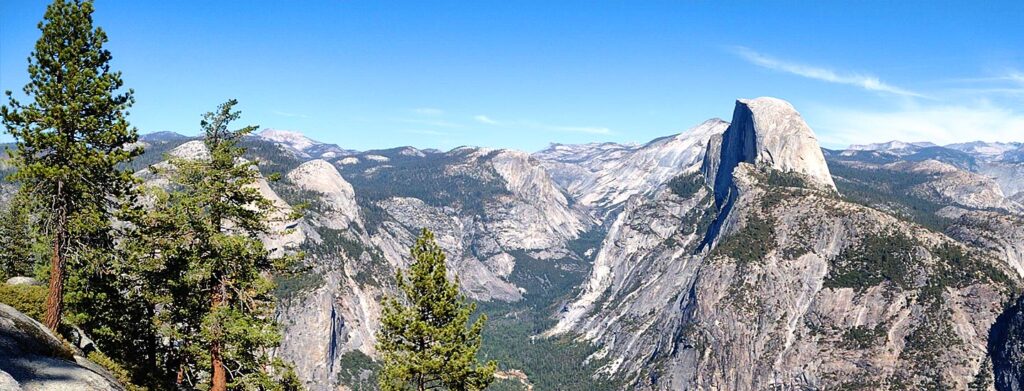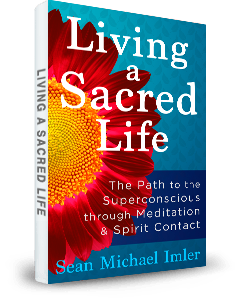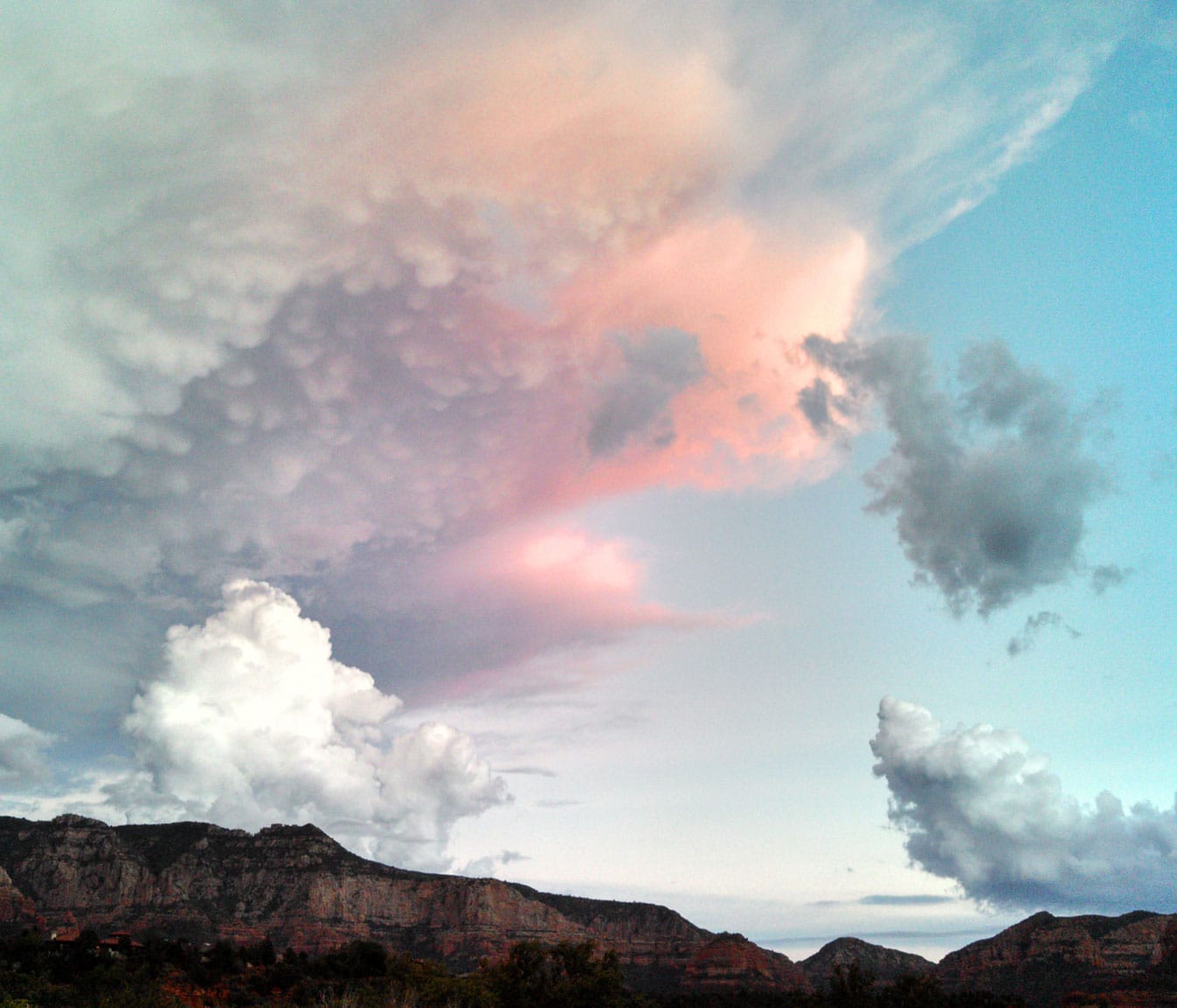Our relationship with Earth has significantly changed over the centuries. We have transitioned from a society deeply rooted in nature and its rhythms, to a society whose actions often undermine the very essence of our planet. In this article, we will delve into the shift in our relationship with Mother Earth, comparing how it was before the industrial revolution and how it is now.
Contents
Understanding this change is not just an exercise in historical exploration. It’s a critical reflection on our past and present that can guide our future actions.
Several millennia ago, our ancestors lived in harmony with nature. Their survival was intimately tied to the cycles of the seasons, the movements of wildlife, and the bounty of vegetation. This is quite contrary to our current relationship with her:
- Dependence on Technology: We have become heavily reliant on technology, which has distanced us from nature.
- Consumerism: We continually pursue economic growth at the expense of our planet’s resources.
- Disconnection: Many of us live in urban areas, disconnected from the natural world.
On the other hand, before the industrial revolution:
- Deep respect for nature: Our ancestors revered the earth and saw themselves as a part of it, not separate or superior to it.
- Sustainable Practices: They practiced sustainable living, understanding that what they took from the earth, they must give back.
- Harmony: They lived in harmony with nature, adjusting their lifestyle according to the changing seasons and conditions.
It’s clear that our relationship with Mother Earth has been drastically altered. We’ve shifted from a society in tune with nature to one that often exploits and degrades it. However, this is not the end of the story. We can, and should, strive to restore our connection with the earth, to protect, serve, and save our planet.
A New Relationship with Mother Earth
It’s essential to acknowledge the profound shift in our relationship with our planet since the advent of the Industrial Revolution. This period, marked by rapid industrial growth and technological advancement, has undeniably transformed our relationship with Mother Earth, altering it from one of symbiosis and respect, to one largely characterized by exploitation and neglect.
Before the Industrial Revolution, we lived in harmony with nature, respecting it as the provider of our basic necessities – food, water, and air (the very foundation of human health). However, with the Industrial Revolution, this dynamic began to change dramatically. Our planet was seen more as a limitless source of raw materials for our factories, as a place to dump our waste, and less as our nurturing home.
Industrialization, while it has brought significant development and progress, has also led to the degradation of our environment. The rampant exploitation of natural resources, the pollution of our air and water, and the creation of a multitude of waste products are all side effects of this industrial growth. We’ve started to see our planet not as a living, breathing entity to be cared for, but rather as a commodity to be used and exploited.
“We do not inherit the Earth from our ancestors; we borrow it from our children.”
~Native American Proverb
To Forge a New Relationship
But it’s not too late to change. We can forge a new relationship with our Mother Earth, based on respect, care, and sustainable practices. Here are a few ways we can do this:
- Embrace Sustainable Living Practices: This involves making conscious choices in our everyday lives that minimize our impact on the environment. From the food we eat to the products we buy, every decision can contribute towards sustainability.
- Reduce, Reuse, and Recycle: By cutting down on waste, reusing items whenever possible, and recycling materials, we can significantly lessen our environmental footprint.
- Support Renewable Energy: Renewable energy sources, like solar and wind power, are cleaner alternatives to fossil fuels. By supporting these, we can help reduce the pollution caused by traditional energy sources.
- Plant More Trees: Trees play a vital role in maintaining the balance of our ecosystem. They absorb carbon dioxide, provide habitats for wildlife, and contribute to our well-being.
Our planet is our home, and just as we take care of our personal dwelling, we need to care for our global home. We can start by changing our perspective – viewing the Earth not as a commodity, but as a shared living space that we need to protect, serve and save for future generations. By taking these steps, we can start to rebuild a healthy, respectful relationship with our Mother Earth.
The Industrial Revolution and Its Impact on the Planet
When we examine the annals of human history, we cannot overlook the Industrial Revolution, a pivotal period that fundamentally transformed our relationship with Mother Earth. It’s like a double-edged sword, bringing about unprecedented growth and development while simultaneously harboring the seeds of our planet’s current ecological crises. But what does this mean for us, and how does it impact our task of protecting, serving, and saving our precious planet?
The Dawn of the Industrial Age
The Industrial Revolution, which began in the 18th century (more specifically around 1760), marked a significant transition from agrarian, rural societies to industrial and urban ones. It’s during this period that we began to exploit Mother Earth’s resources on a massive scale to fuel our factories, machines, and burgeoning cities. I often refer to this as the start of our “great acceleration” because it’s when we really began to speed up our consumption of natural resources.
The Environmental Consequences
While the Industrial Revolution fostered impressive economic growth, it came at a steep environmental cost. The widespread use of coal, for instance, led to increased carbon dioxide emissions (a major contributor to global warming). It also introduced a host of other pollutants into the air, water, and soil, upsetting the delicate balance of our ecosystems. Let’s not forget the deforestation that occurred as we cleared vast tracts of land for farming and urban development, which resulted in loss of habitat for countless species and disrupted the natural carbon cycle.
The Human Impact
The influence of the Industrial Revolution wasn’t just limited to the environment, but it also reshaped our relationship with Mother Earth. Before this era, we lived in harmony with nature, depending on it for our basic needs and respecting its limits. The industrial age, however, made us more disconnected from the natural world (or so it seemed). Our lives became increasingly centered around manufactured goods and artificial environments, and we began to see our planet not as a home to protect, but as a resource to be exploited.
We live on this earth not as owners but as caretakers, yet the Industrial Revolution seemed to have made us forget this essential truth.
Lessons for the Present and the Future
In facing the current environmental crises, we can draw valuable lessons from the Industrial Revolution. Understanding how this period of history contributed to our current problems is the first step in preventing similar mistakes in the future. It urges us to take a hard look at our consumptive behaviors and reassess our relationship with the planet. The need for sustainable development, which respects the limits of our planet and safeguards the health of our ecosystems, has never been more critical. Remember, the true value of Mother Earth lies not in what she can provide us materially, but in the life-sustaining services she provides.
As we continue our journey in protecting, serving, and saving Mother Earth, let’s use the lessons from our past to guide our decisions in the present and shape a sustainable future for all.
The Emergence of a Throwaway Culture
It is with a heavy heart that I recount the birth of our throwaway culture, a byproduct of the industrial revolution. This epoch in human history, marked by rapid industrialization and technological advancement, significantly altered our relationship with Mother Earth. From the perspective of a loving custodian, we transformed into a reckless consumer, treating the Earth as a limitless supplier for our needs and whims. In doing so, we unwittingly fostered a culture of wastefulness and disposability.
The industrial revolution, whilst undeniably a cornerstone of human development, introduced a paradigm shift in our approach to consumption. Prior to this era, goods were made by hand, valued, and often repaired and reused. However, with the advent of mechanization and mass production, products became cheaper and more readily available. This convenience was a double-edged sword, as it engendered in us a mindset of disposability.
Our throwaway culture is characterized by excessive consumption and waste of resources, which is a stark departure from the sustainable practices of our ancestors. We purchase, use, and discard products with little thought for the environmental implications of our actions.
Fast Fashion
Take, for instance, the phenomenon of fast fashion. This industry thrives on the constant churn of trends, encouraging consumers to constantly update their wardrobes. A byproduct of this culture is a significant increase in textile waste. According to the Environmental Protection Agency, in 2018 alone, 17 million tons of textile waste were generated. This example elucidates the extent of the damage our throwaway culture inflicts upon the Earth.
Food System
In addition to consumer goods, the industrial revolution has also drastically changed our food system. Advances in technology have led to the rise of factory farming, a practice that prioritizes quantity over quality and sustainability. The result is a food system that is largely unsustainable, contributing significantly to greenhouse gas emissions, deforestation, and water pollution.
We must awaken to the harsh reality that our current consumption patterns are unsustainable. However, it is within our power to change. We can re-orient our habits towards sustainability, reduce our waste, and make more conscious purchasing decisions. By doing so, we can hope to mitigate the damage we have inflicted upon our beloved Earth and begin to heal the wounds of our throwaway culture.
The Role of Corporations in Environmental Degradation
As we delve deeper into the intricate relationship between human societies and our precious planet, we find ourselves inevitably drawn to the pivotal role that corporations play in environmental degradation. It is my firm belief (and one that is increasingly being echoed by a multitude of global voices) that the unchecked industrial growth that corporations spearhead has been a major contributor to the deleterious changes that our environment is currently undergoing.
Industrial Revolution: A Turning Point
The Industrial Revolution, which began in the late 18th century, was a turning point in human history. It transformed our relationship with the Earth, turning it from a provider to a resource to be exploited. We began to view the planet not as a home but as a warehouse, filled with raw materials ripe for extraction. The Earth was treated as an inexhaustible supplier, feeding the voracious appetite of burgeoning industries, with little regard for sustainability or the long-term health of the planet (and, consequently, our own health).
The Corporate Industrial Complex and Its Impact
The rise of the corporate industrial complex has only amplified these problems. These entities, driven by the pursuit of profit, have often exhibited a reckless disregard for the environment, exploiting natural resources without adequate thought for conservation or replenishment. Their practices have led to widespread deforestation, pollution of air and water bodies, and increased carbon emissions, not to mention the deleterious effects on biodiversity and local ecosystems.
Economic growth and environmental degradation are not simply correlated, but are in fact deeply interconnected. The relentless pursuit of growth, much of it driven by corporations, is leading us down a dangerous path.
Key Areas of Corporate-Driven Environmental Damage
- Deforestation: Massive clearance of forests for agriculture, mining, and infrastructure development is leading to loss of biodiversity, disruption of ecosystems, and contribution to climate change.
- Pollution: Industrial waste, toxic emissions, and chemical spills are contaminating our air, soil, and water, with devastating impacts on human health and wildlife.
- Overconsumption: Corporations often encourage excessive consumption patterns, leading to greater waste production and resource depletion.
- Climate Change: The burning of fossil fuels for energy and transportation contributes significantly to greenhouse gas emissions, driving global warming and climate change.
There’s a lot of propaganda for and against the idea that greenhouse gas emissions cause climate change. The growth addiction of corporations claim there’s no proof that the emissions of their factories is leading to the destruction of our ecosystems, and they use leading scientists to prove their claim. The bottom line is the undeniable truth that chemical emissions from vehicles, factories, and industrial waste are noxious to breathe and kill wildlife. Whether or not they cause climate change is irrelevant, and the propaganda of that arguments is a subterfuge that shifts the argument away from the end result and corporate responsibility for this destruction.
It is essential to understand that these issues are not isolated incidents, but represent a systemic problem. They are the inevitable result of a model of industrial growth that prioritizes profit over planet. We need to fundamentally reconsider this approach if we are to protect, serve, and save Mother Earth.
The Importance of Individual Action
When it comes to protecting, serving, and saving Mother Earth, the actions of individuals hold significant value. While it’s true that the industrial revolution has had a profound impact on our relationship with the planet (primarily by transforming it into a resource to be exploited), it’s equally true that each of us has the power to effect change in our everyday lives.
Following the industrial revolution, our connection with the Earth was fundamentally altered. No longer were we simply inhabitants coexisting with nature; instead, we became dominant forces, using the planet’s resources for our own ends. Yet, as we have seen, this approach is unsustainable. It is, therefore, up to us as individuals to take responsibility for our actions and make changes that will lead to a healthier planet.
The Power of Individual Action
“Never doubt that a small group of thoughtful, committed citizens can change the world; indeed, it’s the only thing that ever has.”
~Margaret Mead
This quote from anthropologist Margaret Mead rings true when considering the role of individual action in environmental preservation. Our daily choices – from what we buy, how we travel, to what we eat – have a far-reaching impact on the health and wellbeing of our planet. It is through these choices that we can begin to shift our relationship with the Earth from exploitative to symbiotic.
How Individuals Can Make a Difference
- Reduce, Reuse, and Recycle: By minimizing our waste and reusing or recycling items, we can significantly lessen our impact on the planet.
- Make Sustainable Choices: Opt for products that have been produced sustainably, whether it’s food, clothing, or household goods.
- Limit Energy Consumption: Simple steps such as turning off lights when not in use, reducing water usage, and opting for energy-efficient appliances can make a big difference.
- Advocate for Change: Use your voice to advocate for policies that protect the environment, whether it’s at a local, national, or global level.
While the industrial revolution may have skewed our relationship with Mother Earth towards exploitation, it’s important to remember that we have the power to change this. By taking individual action and making conscious, sustainable choices, we can work towards a future where we protect, serve, and save our planet.
The Power of Education in Creating a Sustainable Future
Let’s start by acknowledging a fundamental truth: education is a powerful tool (perhaps the most powerful tool) we have in our arsenal to create a sustainable future for Mother Earth. It’s through learning and understanding that we can truly grasp the depth of the damage we’ve inflicted on our planet and become equipped to make necessary changes.
Consider the industrial revolution — a time of innovation and transformation that brought about significant developments but also marked the beginning of our complicated relationship with our planet. We saw the Earth not just as our home, but as a supplier of resources to fuel our rapid advancement. However, in our quest for progress, we overlooked the fact that our planet’s resources are not infinite (a fact that is painfully evident today).
So, how do we change this narrative and move towards a more symbiotic relationship with Mother Earth? I believe the answer lies in education, and here are a few reasons why:
- Increased Awareness: Educating people about environmental issues increases awareness about the importance of sustainability. When we know more about the harm our actions cause, we’re more likely to make changes.
- Empowering Change: Education empowers individuals to make informed decisions that benefit the environment. With knowledge comes the power to effect change on an individual and collective level.
- Innovation: Education fosters innovation. Understanding the problems we face is the first step towards finding sustainable solutions.
Actions and Attitudes
However, education alone isn’t enough. It needs to be coupled with the right actions and attitudes. It’s not enough to simply know about the problems — we need to be willing to take action and make difficult decisions for the health of our planet.
“Education is the most powerful weapon which you can use to change the world.”
~Nelson Mandela
These words by Mandela encapsulate the heart of this discussion. We can use education as a weapon for change, to transform our relationship with Mother Earth from one of exploitation to one of stewardship.
To facilitate this, educational institutions need to prioritize sustainability in their curriculum. They need to educate students about the impact of the industrial revolution on our planet, the challenges we face due to climate change and the ways to mitigate them. They also need to instill in them a sense of responsibility and compassion for our planet.
Moreover, education needs to be accessible to all, regardless of socio-economic background. After all, the challenge of saving our planet is a collective one, and everyone must be equipped with the knowledge and understanding to contribute to this cause.
The Benefits of a Zero-Waste Lifestyle
Our relationship with the planet, once a harmonious symbiosis, has been irrevocably disrupted since the onset of the Industrial Revolution. Rather than being stewards of the Earth, we have become its exploiters, extracting resources without giving anything in return. Consequently, it’s imperative that we reevaluate this dynamic. One such method of reinventing our relationship with the Earth is through the adoption of a zero-waste lifestyle, which offers a multitude of benefits, not only for the individual but also for our shared home, Mother Earth.
The Personal Benefits
There’s a significant misconception that a zero-waste lifestyle is inconvenient or burdensome, but that couldn’t be further from the truth. In fact, a zero-waste lifestyle can drastically enhance your life in several ways:
- Economic Benefits: By purchasing only what you need and repurposing items you already have, you can save a significant amount of money. This shift towards mindful consumerism can lead to a healthier financial life.
- Health Benefits: A zero-waste lifestyle often means reducing consumption of processed foods (which are typically packaged in non-recyclable containers) and increasing consumption of fresh, organic produce (which is less likely to be packaged in plastic).
- Psychological Benefits: Living a zero-waste lifestyle can lead to increased feelings of self-efficacy and satisfaction, as you will be actively contributing to the betterment of the planet.
The Environmental Benefits
While the personal benefits of a zero-waste lifestyle are significant, the environmental benefits are even more profound:
- Reduced Waste Production: One of the most immediate effects of a zero-waste lifestyle is the reduction in waste production. This not only lessens the burden on landfills but also reduces pollution from waste management practices.
- Conservation of Resources: By reusing and recycling, we significantly cut down on the need for new resources. This ultimately aids in preserving natural habitats and reducing the energy necessary for manufacturing.
- Reduced Greenhouse Gas Emissions: Waste production is a major contributor to greenhouse gas emissions. By reducing waste, we can significantly lessen our carbon footprint and combat climate change.
Remember, a zero-waste lifestyle isn’t about perfection; it’s about making better choices, little by little, each and every day. It’s about doing what you can, with what you have, where you are.
Adopting a zero-waste lifestyle may require a shift in perspective and habits, but the benefits make the effort worthwhile. Let’s strive to become better stewards of Mother Earth, nurturing and protecting her just as she has done for us. In doing so, we can ensure that our home continues to thrive and sustain future generations.
The Circular Economy: A More Sustainable Model for Production and Consumption
The circular economy is a concept that I firmly believe carries the potential to transform our relationship with Mother Earth dramatically. It signifies an economic system aimed at eliminating waste and the continual use of resources (unlike the traditional linear model where we extract, produce, consume, and eventually discard). This model, instead, involves sharing, leasing, reusing, repairing, refurbishing, and recycling existing materials and products as long as possible. In this way, the life cycle of products is extended, making the most out of the world’s finite resources.
Imagine this: instead of discarding products after their initial use, we maintain them, repair them, upgrade them, and even repurpose them, thereby reducing the need for new products and minimizing waste. This approach is not only more sustainable but also economically beneficial. It’s a win-win for both us and the planet.
Current Adoption
It’s important to note that the circular economy isn’t just a theory or an abstract concept. Various businesses and industries are already making significant strides in adopting this model. Companies like Patagonia (known for repairing and recycling their products) and Interface (a carpet manufacturer that utilizes old fishing nets) are leading examples of this.
The circular economy model also encourages us to shift our perspective on consumption. It urges us to move away from the ‘take-make-dispose’ pattern of growth and start viewing waste as a resource rather than a liability. This transition to a circular economy can take place at different levels:
- Micro level: This refers to individuals and organizations making small-scale changes, like recycling more, reducing waste, and choosing products with a longer lifespan.
- Meso level: This involves the economic agents (businesses, industries, etc.) implementing circular processes, such as refurbishing used products, offering product-as-a-service, or creating renewable energy solutions.
- Macro level: This pertains to the broad systemic changes, including policy and legal frameworks that encourage circular economy principles.
However, transitioning to a circular economy isn’t a task that can be accomplished overnight. It will involve a comprehensive overhaul of our existing economic systems and significant shifts in consumer behavior. Yet, I firmly believe that the resulting benefits for our planet and future generations make this a worthwhile endeavor.
As stewards of Mother Earth, it’s our responsibility to protect, serve, and save her. So, let’s embrace the circular economy and take concrete steps towards a more sustainable future. After all, there’s no Planet B.
You may also want to read, “Who and What is Mother Earth“












